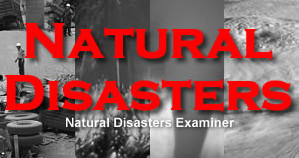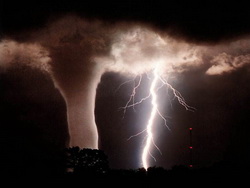
Update, 5:30pm – The snow is still coming, it is just a little bit slower than originally anticipated. A Winter Weather Advisory will go into effect at 8:00pm for the Front Range and a Winter Storm Warning will go into effect for the eastern plains.
Snow will develop later this evening and we still expect to see 2 to 4 inches of snow by morning. The snow will continue through Wednesday and when it ends we will have between 4 and 8 inches total accumulation.
As discussed before (see below), the eastern plains are where the brunt of this storm is really going to hit. Travel on I-70 from Limon through Kansas and I-76 from Sterling through Nebraska is likely to become hazardous later in the day tomorrow.
Original story, 4:14pm – ust in time to potentially snarl holiday travel, a winter storm is bearing down on Thornton and will have far-reaching impacts across the Great Plains. A variety of winter weather advisories and warnings have been issued stretching from Colorado through Kansas north through the Midwest to the Canadian border.
For Colorado, the storm has already begun to affect the southwestern part of the state where snow began falling earlier today. The Colorado Department of Transportation says that chain laws are in effect on US 160 and US 550. As the storm moves further into the state, similar restrictions can be expected.
In Denver, and for much of the Front Range, a Winter Weather Advisory is in effect from 8:00pm tonight through 5:00am Thursday. Snow will begin to develop this evening and continue throughout the day Wednesday before easing late Wednesday afternoon. Look for us to have 2 to 4 inches in the Denver area. By the time the storm is done, we are looking at 4 to 8 inches of total accumulation and with winds blowing from 10 to 20 mph, blowing and drifting snow is likely.
The real threat from this storm will be in areas east and northeast of Denver. The eastern plains of Colorado are forecast to receive 5 to 10 inches and the wide-open expanses and wind could lead to blizzard-like conditions. Travel on I-70 east of Limon through Kansas and I-76 northeast of Sterling through Nebraska will become difficult and possibly dangerous. A Winter Storm Warning is in effect for these areas.
This storm certainly won’t come anywhere near the level of the record-setting Christmas Eve Blizzard of 1982 however, it will virtually ensure that we have a white Christmas with snow on the ground. Temperatures will be bitterly cold Wednesday through Friday and it may be Sunday before we see them rebound to above freezing.
If you haven’t done so, be sure to follow us on Twitter and become a fan on Facebook! They are great ways to stay up to date with the latest weather news, forecasts and conditions!
As always, stay tuned to ThorntonWeather.com for truly local weather for Thornton.







.jpg)
